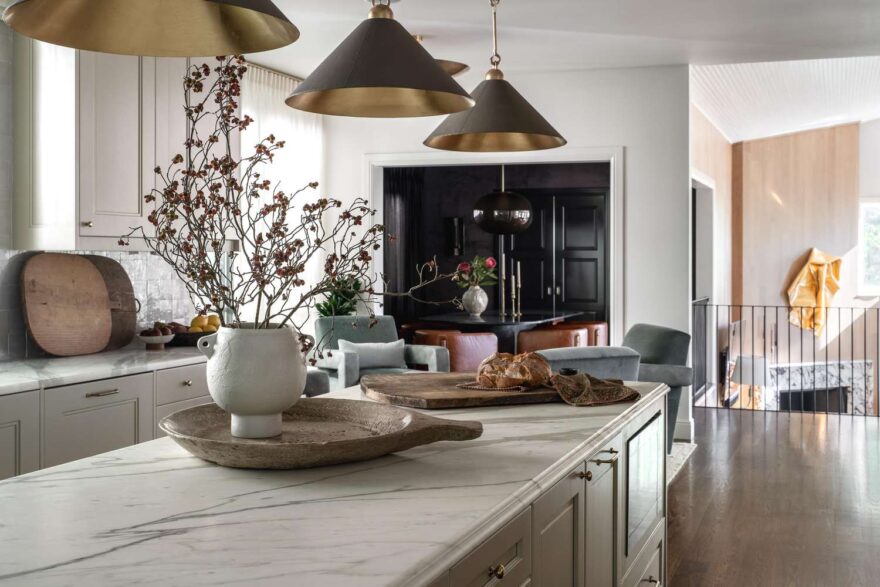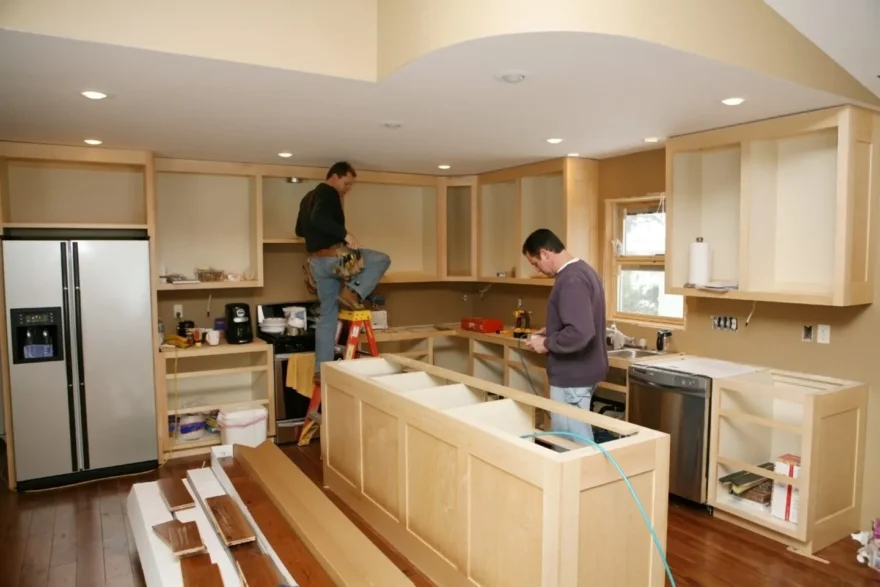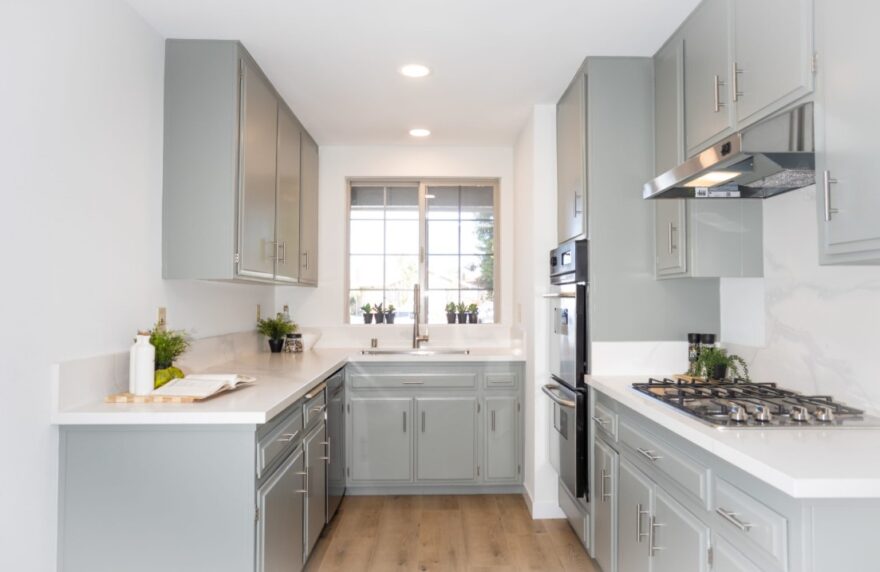How to Remodel a Kitchen on a Tight Budget

A kitchen remodel doesn’t have to cost five figures. Yes, you can refresh your cooking space, boost functionality, and even impress guests—without draining your savings account. But it takes more than clipping coupons and crossing your fingers.
Budget kitchen renovations are all about strategy: knowing where to splurge, where to save, and how to creatively repurpose what you already have. It’s not about cutting quality—it’s about being intentional with every dollar.
This guide is your blueprint for remodeling a kitchen on a tight budget, filled with real-world advice and cost-effective design upgrades that make a big impact.
Start With a Solid Budget and Priorities
Before you even think about tile samples or paint swatches, you need to define your actual budget. Not a vague idea, but a clear ceiling—something you will not exceed. The average kitchen remodel can run $15,000 to $40,000, but a budget-conscious project can often stay well under $7,000, especially if you focus on targeted updates.
Start by listing everything you’d like to do—then rank them by priority. What bothers you most? Is it the outdated countertops, the dark cabinets, or the lack of lighting? Tackle what will have the most daily impact first. Also, leave some cushion—10% to 15%—for the unexpected. Minor plumbing issues, hidden water damage, or needing an extra gallon of paint can quickly derail a tight budget if you’re not prepared.
The goal isn’t to do everything at once, but to be smart about sequencing and realistic about what’s achievable now versus later.

Paint, Refresh, and Reuse ─ Cabinets and Countertops
Cabinets are the single most expensive part of most kitchen remodels—but replacing them isn’t your only option. In fact, not replacing them is one of the smartest budget-saving decisions you can make. Most older cabinets are structurally sound and just need a facelift. A good cleaning, sanding, and a coat of semi-gloss paint can breathe new life into even the dreariest wood tones.
You can also swap just the cabinet doors or go doorless entirely by opting for open shelving up top. Replacing old knobs and pulls with modern hardware gives the whole kitchen a more polished look—and often for less than $100.
Countertops can also be refreshed on a budget. Laminate, butcher block, and even concrete overlays are all affordable alternatives to granite or quartz. If the layout works, keep it. If not, consider buying a remnant slab—stone yards often sell leftovers from larger cuts at a deep discount.
Small Decor Details Matter More Than You Think
One of the most overlooked parts of a remodel is the accessories—the decor and little daily-use items that subtly elevate a space. Swapping out worn or mismatched items can have a bigger visual impact than you might expect, especially when it comes to cohesive design.
Consider updating your coasters as part of your refresh. While they may seem like a minor touch, coasters help protect surfaces while also tying into your overall aesthetic. Think matte finishes, natural materials, or minimalist prints that echo your backsplash or drawer handles. When done right, these small choices quietly pull a kitchen together.
The same principle applies to dish towels, utensil holders, and even rugs. Choose a few elements that complement your chosen palette or texture theme, and suddenly the space feels like a professionally designed room—even if most of it stayed intact.

Light It Up ─ Affordable Lighting Upgrades
Good lighting is what separates a gloomy, dated kitchen from one that feels fresh, welcoming, and modern. And the best part? It doesn’t have to be expensive. For under $300, you can dramatically improve how your kitchen looks and feels.
Start by replacing outdated overhead fixtures with more modern pendants or semi-flush mounts. Choose styles that match your new finishes—black matte, brushed brass, or warm woods are great starting points. Then, add under-cabinet LED strip lights. These plug-and-play lights can be installed in less than an hour and offer both task lighting and ambiance.
If you have an eat-in kitchen or a bar, consider hanging a statement pendant light. It draws the eye upward and helps define the space. Even switching to soft white LED bulbs (around 2700K–3000K) can shift the tone of your kitchen from cold to cozy without changing any fixtures.
Lighting sets the mood. Don’t underestimate its power in budget-friendly remodeling.
Sweat Equity Pays Off ─ What You Can DIY Safely
Labor can eat up half—or more—of a remodeling budget. If you’re up for a little learning and careful planning, doing some of the work yourself can lead to major savings. The trick is to pick the right tasks. Don’t try to rewire the kitchen if you’ve never held a voltage tester. But painting cabinets? Totally doable.
You can also:
- Replace hardware and install floating shelves
- Apply peel-and-stick backsplashes or vinyl tile flooring
- Swap out light fixtures or faucets (with proper guidance)
- Build a simple kitchen island or cart with repurposed wood
YouTube is your friend here. So are local hardware stores that offer free workshops. Even just doing prep work—removing old flooring, sanding cabinets, or taping walls—can reduce how much you pay a pro, if you decide to hire one for the finish work.

Improve Function First ─ Storage, Layout, and Flow
Budget kitchen upgrades aren’t just about looks—they should make your life easier. One of the most effective changes is improving storage and how you move through the space. That doesn’t always mean tearing down walls.
Start by making the most of what you already have. Add pull-out organizers inside lower cabinets so you’re not on your knees digging through baking sheets. Use the space above cabinets for baskets, or install toe-kick drawers for rarely used items like holiday platters.
You can also rethink your work triangle—the space between the sink, fridge, and stove. Does it flow well? If not, can you relocate a cart or trash bin to clear up space? Even small changes like moving the microwave to a shelf can free up counter real estate.
Efficiency in layout and storage helps you feel like you remodeled, even if the footprint didn’t change.
Smart Spending ─ Where to Save, Where to Invest
Every budget remodel requires compromise. The trick is knowing where to cut and where it’s worth investing a bit more. For example, don’t overspend on trendy drawer pulls—they’re easy to swap later. But if your faucet leaks or your sink is too shallow to function, upgrade them.
Here’s a basic guide:
Worth the Splurge
- Deep, single-basin kitchen sink
- Soft-close drawer slides
- Pull-out waste and recycling bins
- Quality faucet with sprayer
- Durable flooring if you have kids or pets
Places to Save
- Open shelving instead of upper cabinets
- Laminate or butcher block counters
- Mid-range hardware
- Peel-and-stick backsplash tile
- Coasters, towels, and tabletop accessories
Remember, not everything needs to be high-end. Sometimes mid-range products are just as functional—and often more forgiving to install and maintain.

Sample $5,000 Budget Breakdown
|
Category |
Estimated Cost |
| Paint (walls + cabinets) | $300 |
| Hardware + Open Shelving | $250 |
| Lighting Fixtures + Bulbs | $400 |
| Countertops (Laminate) | $1,000 |
| Flooring (Vinyl or Peel/Stick) | $600 |
| Sink + Faucet | $500 |
| Appliances (Used or Outlet) | $1,200 |
| Decor (coasters, towels, rugs) | $250 |
| Emergency Buffer | $500 |
Final Thoughts ─ A Kitchen That Works for You
A kitchen remodel doesn’t have to be flashy or expensive to be meaningful. It just needs to function better and feel more like home. When working on a tight budget, your biggest asset isn’t money—it’s intention.
Focus on what you touch and use daily. Does your drawer glide easily? Can you prep dinner without bumping into things? Does the lighting feel clean and inviting? When these answers start turning into yeses, you know you’re remodeling in the right direction.
And when someone asks who designed your new kitchen, you’ll be able to smile and say: “I did—on a budget.”
Meta Description (155 characters):
Smart ways to remodel your kitchen on a tight budget—paint, lighting, DIY tricks, and decor like coasters can make your space feel new without overspending.

